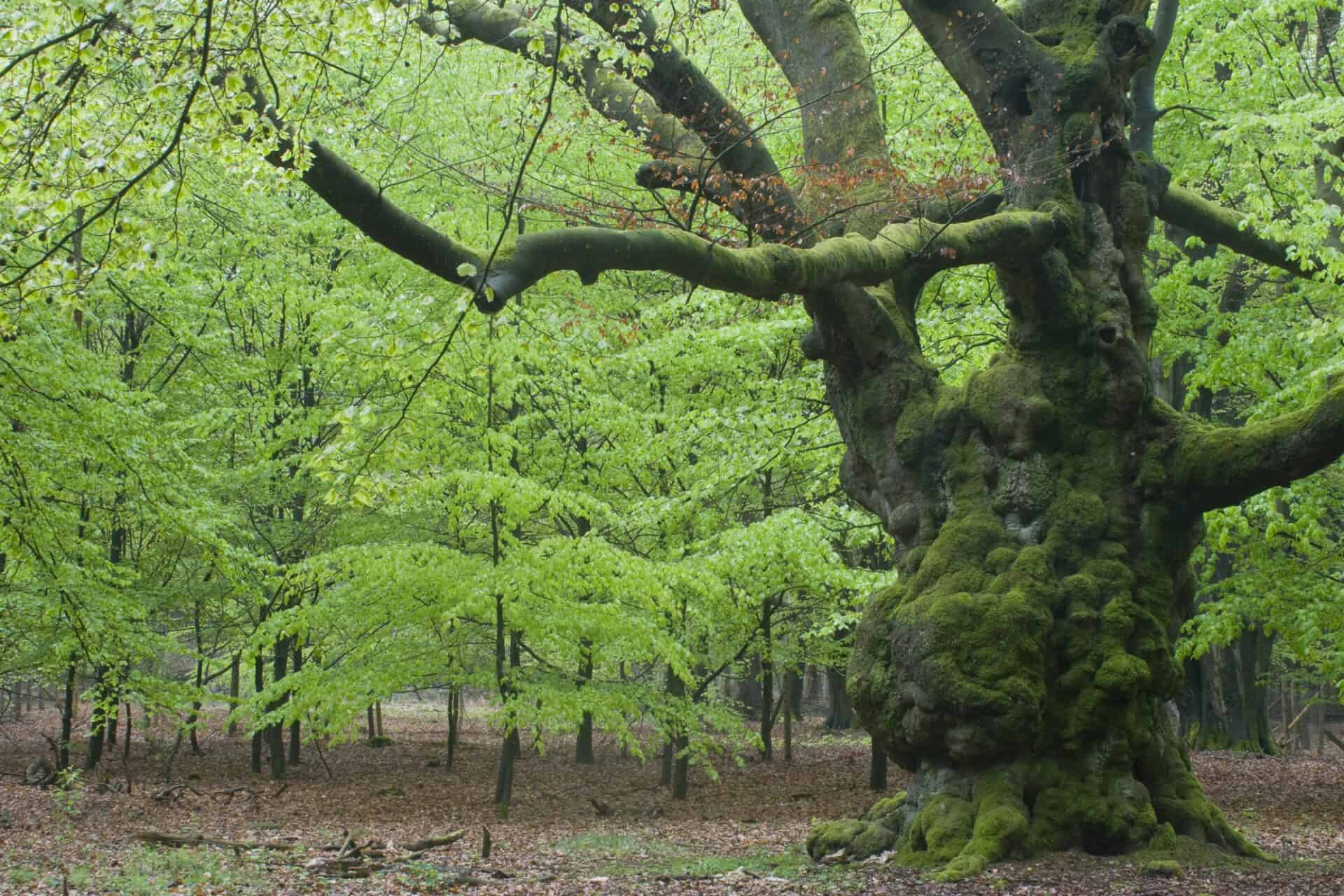Europe still harbors several areas of virgin and old-growth forests, although they are becoming increasingly rare due to centuries of logging, agriculture, and development. These remaining forests are precious for their biodiversity and as reference points for natural ecosystems. Europe’s virgin forests are some of the last remnants of primeval landscapes that once covered much of the continent. These forests are largely untouched by human activity, offering a glimpse into the natural world as it existed for thousands of years.
Białowieża Forest, Poland and Belarus
The Białowieża Forest is one of the best-preserved forest ecosystems in Europe and the last remaining primeval forest of its kind on the continent. Spanning the border between Poland and Belarus, it is home to the largest population of European bison (wisent), the continent’s heaviest land animal. Ancient oaks, towering spruces, and diverse wildlife make Białowieża a critical natural heritage site. In recognition of its value, parts of the forest have been designated as a UNESCO World Heritage site and a Biosphere Reserve.
Rügen: Jasmund National Park, Germany
Jasmund National Park is located on the island of Rügen in the Baltic Sea. It’s not a virgin forest in the strictest sense, as some areas have been influenced by human activity, but it’s still recognized for its old beech forests. The park features chalk cliffs, including the famous Königsstuhl (King’s Chair), which tower above the sea. In 2011, these beech forests were added to the UNESCO World Heritage List as part of the Primeval Beech Forests of the Carpathians and Other Regions of Europe.
Perucica Forest, Bosnia and Herzegovina
Perucica is one of the last primeval forests in Europe, located in the Sutjeska National Park. This forest is a strictly protected reserve within the park, with access limited to scientific research and special tourism under expert guidance. It hosts a variety of tree species, including beech, fir, and spruce, and some of the trees are over 300 years old. In the heart of Perucica you will find the waterfall Skakavac, 75 meters high.
Knyszyn Forest, Poland
Located in northeastern Poland, Knyszyn Forest is one of the largest forest complexes in Europe. It’s home to diverse wildlife, including large populations of European bison, wolves, and lynx. While not completely untouched, it has areas of old-growth forest that are valuable for conservation and research.
Muddus/Muttos National Park, Sweden
Muddus is part of the Laponian area, a UNESCO World Heritage Site in northern Sweden. It is known for its vast primeval forests, rich wetlands, deep ravines, and dramatic waterfalls. The forest is characterized by ancient pines and spruces, with some trees over 700 years old. Muddus is also an important habitat for wildlife, including large predators like bears, lynx, and wolverines.
Trillemarka-Rollagsfjell Forest, Norway
This forest reserve in southeastern Norway is known for its well-preserved ecosystem that has escaped modern logging. It contains a mix of old pine trees, some of which are over 500 years old, and a rich undergrowth of rare plants and fungi.
Rothwald, Austria
Rothwald is considered to be the largest untouched forest in the Central Alps. Located within the UNESCO World Heritage Site of the Primeval Beech Forests of the Carpathians and Other Regions of Europe, Rothwald is characterized by dense stands of beech and spruce trees, along with an understorey rich in ferns and mosses. It is a haven for biodiversity and is protected to maintain its natural state.
Cozzo Ferriero, Italy
Situated in the Pollino National Park in the region Basilicata, Cozzo Ferriero is one of Italy’s oldest and most pristine beech forests. As part of the extension to the Primeval Beech Forests UNESCO World Heritage Site, it is recognized for its untouched nature and the vital role it plays in conserving the biodiversity typical of Mediterranean beech forests. Walking through Cozzo Ferriero, visitors can experience the solitude and beauty of an ancient forest ecosystem.
Călimani National Park, Romania
The Carpathian Mountains of Romania host several areas of virgin and old-growth forests. Călimani National Park is one such area, with its mixed stands of beech, spruce, and fir. The Carpathians, in general, are home to some of Europe’s most extensive unfragmented forests, which are part of the larger Carpathian Virgin Forests.
Kočevje Forest, Slovenia
The Kočevje region in southeastern Slovenia maintains large tracts of old-growth beech and fir forests. These impressive giants grow up to fifty meters tall, and some trees are up to five hundred years old. This region is sparsely populated, which has allowed the forest to remain relatively undisturbed.

These forests are important not only for their ecological value but also for the cultural and historical significance they hold in the European landscape. Efforts to protect and study these areas continue, as they serve as vital natural resources and refuges for many species, some of which are endangered or otherwise rare. Conservation initiatives and sustainable management practices are crucial to ensuring that these last remnants of Europe’s primeval past remain for future generations to study and enjoy.
These virgin and ancient forests are significant not only for their biodiversity but also for their role in climate regulation and ecosystem services. They are living laboratories for scientific research, providing insights into ecological processes and the impacts of climate change. Preserving these forests is key to maintaining Europe’s natural heritage and protecting the rare species that call these woodlands home.
Preserving natural beauty
Conscious travelers appreciate the natural beauty of the destinations they visit and take steps to preserve it. They follow designated trails, avoid littering, and respect wildlife and natural habitats. By taking responsible actions, they contribute to the long-term preservation of these natural wonders.


